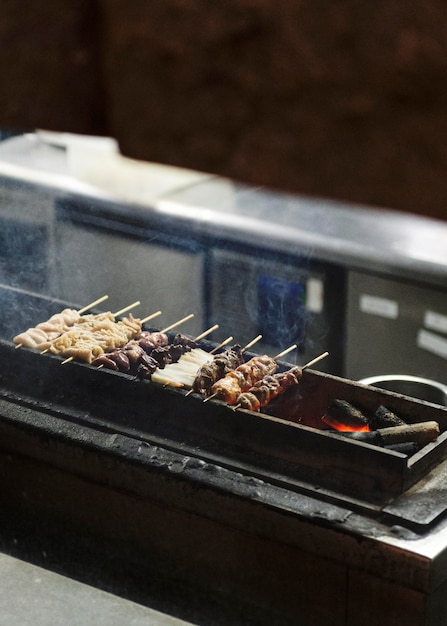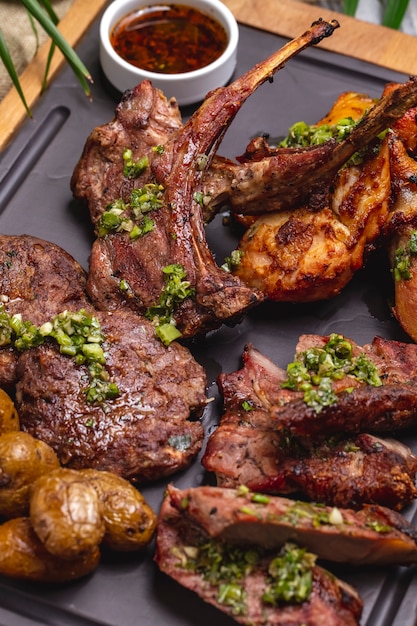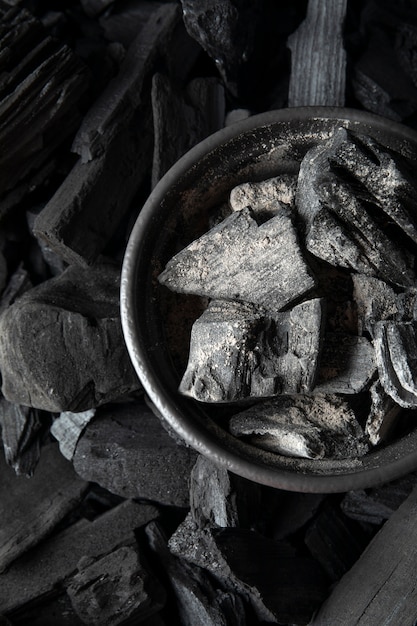What temperature kills bacteria in beef?
Bacteria can be present in raw meat, and it is important to cook beef thoroughly to eliminate any harmful pathogens. The cooking temperature required to kill bacteria in beef depends on the type of bacteria and the specific strain involved. In general, however, a minimum internal temperature of 145°F (63°C) is recommended for beef to ensure safety.
The Importance of Cooking Beef to the Right Temperature
Cooking beef to the correct temperature is crucial in preventing foodborne illnesses caused by bacteria such as E. coli, Salmonella, and Campylobacter. These bacteria can cause symptoms ranging from mild gastrointestinal distress to severe illness, especially in vulnerable populations such as young children, pregnant women, and the elderly.
Recommended Cooking Temperatures for Beef
Below are the recommended internal cooking temperatures for different cuts of beef:
| Cut of Beef | Minimum Internal Temperature |
|---|---|
| Steaks, Roasts, and Fish | 145°F (63°C) |
| Ground Meat | 160°F (71°C) |
| Poultry | 165°F (74°C) |
Understanding Bacterial Destruction through Cooking
Cooking beef to the recommended internal temperature is essential because it ensures that harmful bacteria are destroyed. Different bacteria have varying heat resistance, but most pathogens are killed at temperatures above 140°F (60°C). At these temperatures, proteins in the bacteria denature, rendering them unable to function, reproduce, or cause illness.
A quote from a food safety expert:
“Proper cooking temperatures are critical to reducing the risk of foodborne illnesses related to beef consumption. It is important to use a reliable food thermometer to ensure that meat reaches the appropriate internal temperature and kill any potential bacteria.” – Dr. Sarah Johnson, Food Safety Specialist
Safe Handling and Cooking Practices
To minimize the risk of bacterial contamination and ensure the safety of beef consumption, it is important to follow safe handling and cooking practices. Here are some key tips:
- Wash hands thoroughly before and after handling raw beef.
- Store raw beef separately from ready-to-eat foods to prevent cross-contamination.
- Use separate cutting boards and utensils for raw and cooked foods.
- Thaw frozen beef in the refrigerator or microwave, not at room temperature.
- Cook beef promptly after thawing.
- Do not partially cook beef and then refrigerate to finish cooking later.
- Use a food thermometer to ensure proper cooking temperature is reached.
- Allow beef to rest for a few minutes after cooking to allow residual heat to further destroy bacteria.
Following these practices will help reduce the risk of foodborne illnesses associated with undercooked or contaminated beef.
In Conclusion
To ensure the safety of beef consumption, it is crucial to cook beef to the recommended internal temperature. While the minimum temperature required to kill bacteria in beef is 145°F (63°C), it is important to note that ground meat and poultry have higher recommended temperatures due to their higher risk of bacterial contamination.
By practicing safe handling and cooking techniques, you can enjoy beef while minimizing the risk of foodborne illnesses. Remember to always use a food thermometer to accurately determine the internal temperature of your beef dishes.
How do you know if beef is undercooked?
Whether you are cooking a steak for dinner or grilling burgers for a summer barbecue, it’s important to ensure that your beef is cooked to a safe and delicious level. Undercooked beef can pose health risks due to potential bacteria and pathogens. Here are some telltale signs to help you determine if your beef is undercooked:
Visual cues
One of the easiest ways to assess the doneness of beef is through visual cues. A properly cooked beef will have a browned exterior, while the interior will be pink or red depending on your desired level of doneness. If the beef appears raw or too pink in the middle, it is likely undercooked.
Texture
The texture of beef can also indicate its doneness. Rare beef is tender and juicy, while medium and well-done beef becomes progressively firmer. Undercooked beef may feel soft and mushy to the touch, suggesting that it needs more time to cook.
Internal temperature
Using a meat thermometer is the most accurate way to determine if your beef is undercooked. Different cuts of beef require different internal temperatures for optimal doneness. For example, a medium-rare steak should reach an internal temperature of 145°F (63°C), while ground beef should be cooked to at least 160°F (71°C) to eliminate any potential bacteria.
Remember, it’s better to overcook beef slightly than to undercook it, especially when it comes to ground beef, as thorough cooking helps minimize the risk of foodborne illnesses.
To assist you in cooking beef to the correct temperature, here is a quick reference table:
| Beef Cut | Desired Doneness | Internal Temperature (°F) | Internal Temperature (°C) |
|---|---|---|---|
| Ribeye steak | Medium-rare | 135-140°F | 57-60°C |
| Sirloin steak | Medium | 140-145°F | 60-63°C |
| Ground beef | Well-done | 160°F | 71°C |
Resting time
After cooking, it’s important to let the beef rest for a few minutes before slicing or serving. This allows the juices to redistribute, resulting in a more flavorful and tender meat. If your beef is undercooked, giving it additional resting time won’t fix the problem. Instead, return it to the heat source until it reaches the desired level of doneness.
Remember: Safe handling and cooking practices are essential to prevent foodborne illnesses. Always follow recommended guidelines for cooking beef and ensure that any poultry or pork products are cooked to the appropriate temperatures as well.
Is it safe to eat medium-rare beef?
Medium-rare beef, with its slightly pink center, is a popular choice for meat lovers. However, there is often confusion and concern about the safety of consuming beef cooked to this level of doneness. Let’s take a closer look at whether it is safe to eat medium-rare beef.
Understanding the temperatures
When cooking beef, it is crucial to understand the temperatures at which bacteria are killed and the meat is safe to eat. The United Kingdom Food Standards Agency advises that beef should be cooked to a minimum internal temperature of 70°C for two minutes to ensure any harmful bacteria are destroyed.
The risks involved
Consuming undercooked beef carries a risk of foodborne illnesses such as E. coli or salmonella. These bacteria can cause symptoms like diarrhea, vomiting, and abdominal pain. However, the risk of contracting these illnesses can be minimized by sourcing quality beef from reputable suppliers and implementing proper hygiene practices during handling and cooking.
A matter of personal preference
While it is essential to follow guidelines for food safety, the doneness of beef ultimately comes down to personal preference. Some individuals enjoy the tenderness and juiciness of medium-rare beef, while others prefer their meat more well-done. If you choose to eat medium-rare beef, make sure to source it from reliable sources and handle it with care.
Tip: Use a food thermometer to accurately measure the internal temperature of the beef to ensure it reaches the recommended 70°C.
Mitigating the risks
To reduce the risks associated with eating medium-rare beef, consider the following precautions:
- Buy from reputable sources: Purchase beef from trusted suppliers who follow proper safety procedures.
- Store and handle with care: Keep the beef refrigerated and separate from other foods to avoid cross-contamination. Follow good hygiene practices when preparing and cooking the meat.
- Choose quality cuts: Opt for high-quality, fresh cuts of beef, as they are less likely to harbor harmful bacteria.
By taking these precautions, you can enjoy medium-rare beef while minimizing the potential risks associated with undercooked meat.
How to Ensure Beef is Cooked Safely on a BBQ
Introduction
Cooking beef safely on a barbecue is essential to prevent foodborne illnesses and ensure you enjoy a delicious meal. With the right techniques and precautions, you can confidently serve perfectly cooked beef at your next BBQ gathering. Here are some tips to help you ensure the safety of your beef while grilling.
1. Choose Fresh and Quality Beef
Start with fresh, high-quality beef from trusted sources. Look for beef that is properly refrigerated or chilled and has no signs of spoilage, such as a strange odor or sliminess. Quality meat ensures better flavor and reduces the risk of foodborne illnesses.
2. Prep the Beef Properly
Before grilling, follow proper food handling procedures. Keep raw beef separate from other food items to avoid cross-contamination. Use different cutting boards and utensils for raw and cooked meat. Remember to wash your hands thoroughly with soap and warm water before and after handling raw beef.
3. Cook Beef to the Right Temperature
To ensure beef is cooked safely, use a meat thermometer to check its internal temperature. The UK Food Standards Agency recommends cooking beef to a minimum internal temperature of 70°C. Insert the thermometer into the thickest part of the meat without touching the bone for an accurate reading.
4. Allow Adequate Cooking Time
Give your beef enough time to cook thoroughly. Avoid rushing the process as undercooked meat can pose health risks. Follow recommended cooking times based on the cut and thickness of the beef. Remember that thicker cuts may require longer cooking times.
5. Rest Cooked Beef Before Serving
Once beef reaches the desired internal temperature, remove it from the grill and let it rest for a few minutes. This allows the juices to redistribute, resulting in a juicier and more flavorful steak.
Remember: “It’s important to get the beef off the fridge ahead of time. Let it reach room temperature so it cooks evenly. Don’t be scared when your beef really sizzles as it hits the grill – caramelization is key!” – Celebrity Chef John Torode.
In summary, ensuring the safety of beef cooked on a BBQ involves selecting fresh beef, handling it properly, cooking it to the right internal temperature, allowing adequate cooking time, and letting it rest before serving. By following these guidelines, you can enjoy a safe and delicious barbecue experience.



